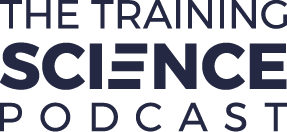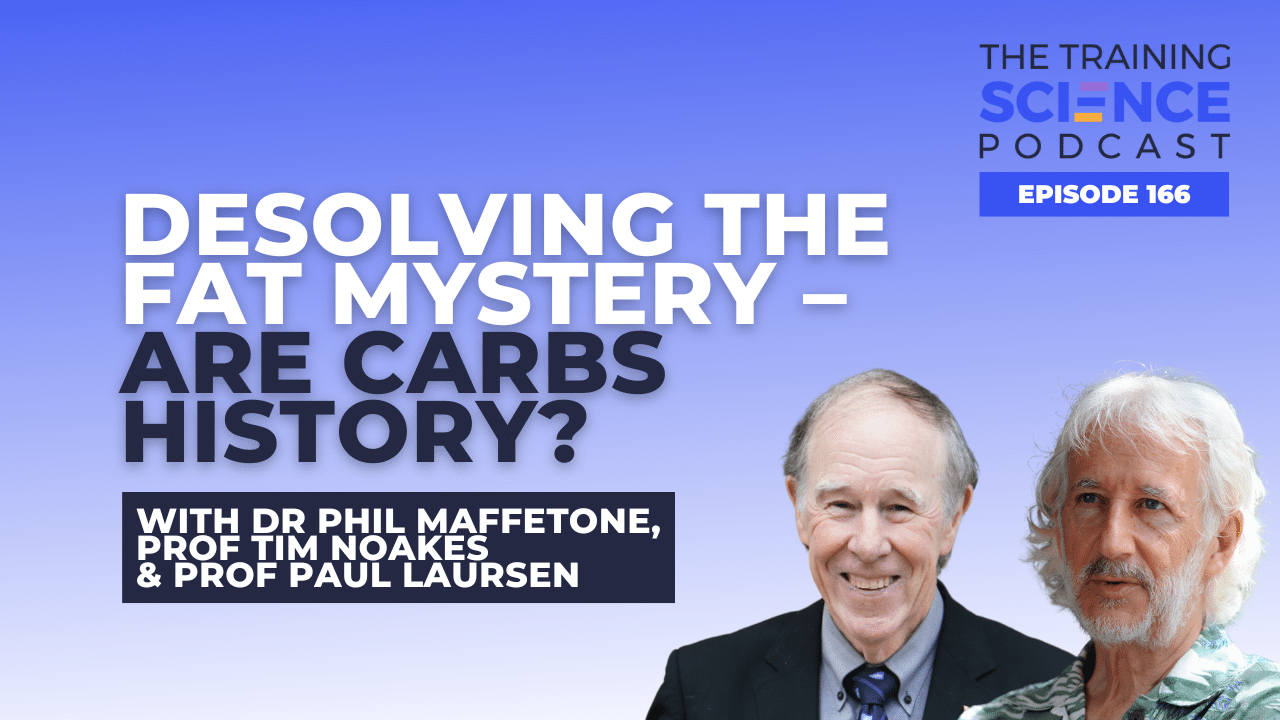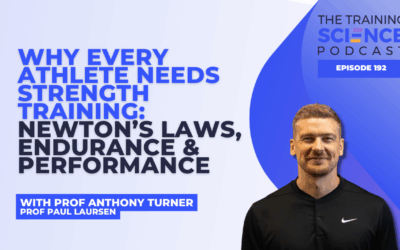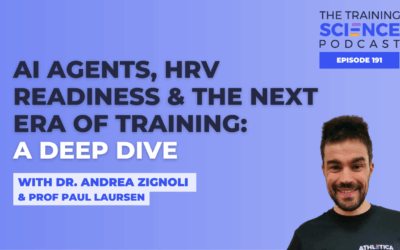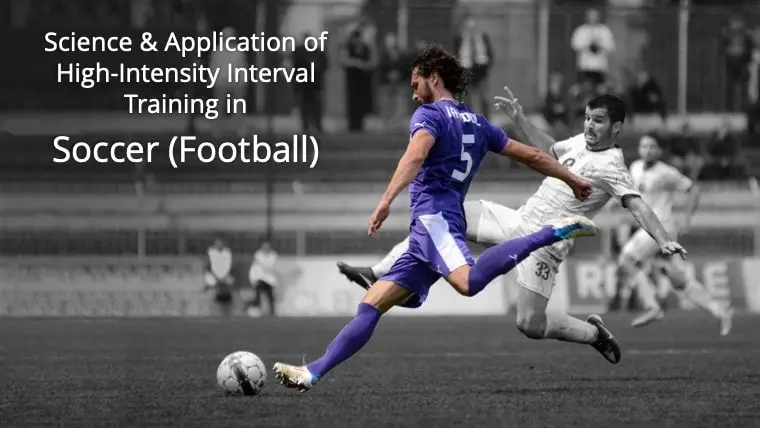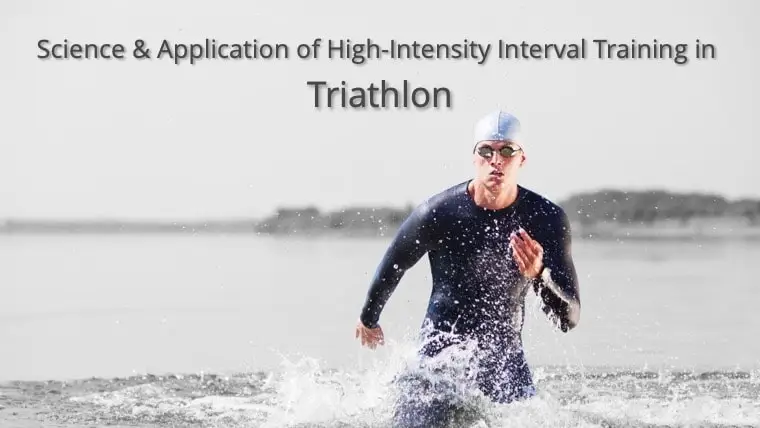🔑 Key Takeaways
-
If you have GLUCOSE available your body will HAVE TO use it. By default you will be “switched” into utilising that glucose, and muscle glycogen will become somewhat irrelevant. Now, IF you take that GLUCOSE away in the first place, your body can IMMEDIATELY UTILIZE FATS. Try to implement more of that!
-
GLUCOSE ≠ GLUCOSE. Whether it is in your blood, liver or the muscles, it is not all utilized the same. You can make smart choices by utilizing liver glycogen stores, rather than being reliant on everything coming straight from your intake into the blood stream.
-
Two key glucose pools exist. Large and small pool. Large pool = muscle glycogen (the sink). Small pool = blood glucose and liver glycogen. Only the small glucose pool appears relevant. For performance to be optimized, you need only ingest enough glucose to prevent hypoglycemia, and this appears to be a very small amount (only 10g/h).
Interview Transcript: Professor Paul Laursen with Dr. Tim Noakes and Dr. Phil Maffetone
Host: Professor Paul Laursen
Guests: Dr. Tim Noakes and Dr. Phil Maffetone
Topic: Exercise Physiology, Nutrition, and Challenging Traditional Beliefs in Endurance Sports
Introduction
Professor Laursen: I’m here with Tim Noakes and Phil Maffetone. Gentlemen, welcome to the podcast.
Dr. Noakes: Lovely to be here with you. Thank you so much.
Dr. Maffetone: Fantastic. Thanks Paul.
Professor Laursen: This is a real honor. I was thinking about this beforehand and pretty much everything I’m known for in the world I’ve stolen from the two of you. So it’s a real honor to have you here together. Phil, why don’t you start things off – when did you first meet Tim or come across his work?
Phil Maffetone’s Introduction to Tim Noakes’ Work
Dr. Maffetone: We’ve never met. Tim and I, and Paul, we’ve never met either. But it’s the age of doing everything online, so sometimes I forget that. I first heard about Tim when I first got into practice in 1977. I’m not sure Tim, but you can tell me the date. It was your first published piece on marathoners who had heart problems, and I was impressed by that because I was learning more and more about this difference between health and fitness.
Often related athletes who were sacrificing their health to impact their performance – getting injured because of it. That was the common one, but an injury can take place in the heart or the brain or anywhere else. I was impressed with that and looked at the other articles that were published afterwards and eventually heard about “Lore of Running” from athletes I was training.
I was impressed with a lot of the philosophy in particular, but the whole approach, and especially the idea of breaking tradition in a sense, which got even more intense when you announced that you’re no longer recommending so many carbohydrates to athletes, which was a wonderful thing.
Tim Noakes’ Early Research Journey
Professor Laursen: Maybe go back there Tim – there was some cardiology conference that you presented at first, right? When did it sort of start for you?
Dr. Noakes: I graduated in medicine in 1974-1975. I worked in a hospital and then I realized I’m not cut out for this medicine practice. I realized I was much more interested in the science because, Phil will tell you, to become a physician you just have to learn this massive textbook. You can explain 100 causes of fever – so a patient comes in and the doctor who can say here are the 100 causes is number one. If you only know 99, you’re number two.
So in 1975-76, I start my research and I go into laboratory with Professor Lionel Opie, who’s very well-known in cardiological surgery but mainly in biochemistry. He had published a paper the year before discounting a hypothesis called the Bassler hypothesis.
Bassler came along – he was a pathologist in California. He said because no marathon runner has ever been shown to have died from coronary artery disease, therefore marathon runners are immune from coronary artery disease.
We knew of a guy who died in South Africa who’d run the Comrades Marathon, which is 90 km (56 miles), and he’d gone out surfing one evening and he developed chest pain and he died. So Lionel Opie reported that in the New England Journal of Medicine, but unfortunately there was no autopsy.
When I went into his laboratory, we would scan the newspapers for deaths among marathon runners in South Africa. I think we had about four or five, and I would literally – it would be reported let’s say on the Saturday, on the Monday I’d fly to wherever the death had happened and try to get the heart of the patient because they always would have an autopsy. I’d bring the heart back to Cape Town where we had the experts who would then dissect the heart and look at it, and we always found coronary artery disease.
The 1976 New York Academy of Sciences Conference
Dr. Noakes: At the end of 1976, they had this amazing conference – the New York Academy of Sciences conference on the marathon. It was unbelievable. Every top scientist was there. It was a magical event, the best conference I ever went to in all the years.
By this time I had looked at three people who’d had heart attacks and were marathon runners, and we tested them. We done ECGs on them and we even done coronary angiograms. So we knew what their arteries looked like and they all had coronary narrowing – they had atherosclerosis.
Lionel Opie said to me, “You take your slides with you. You speak to the organizer and you tell him that I have to be able to speak because Bassler’s speaking – I must be able to counter him.”
I go up to Paul Milvy who organized the conference. I mean, I’m 26 or so, I’m from South Africa. He hasn’t a clue who I am. I go up to him and I said, “My boss Lionel Opie says you’ve got to give me time to speak.” So he said, “Well who are you?” And he said, “Oh but I know Lionel Opie.” And he gave me 10 minutes, I think in one tea break or lunch break.
So I got up there and spoke. And then I was surrounded by people who were really angry because 1976 was just the year that the marathon was taking off. Frank Shorter had won the 1972 Olympics and now they’d had the Olympics, but then they had the New York City marathon.
I gave the speech and then I was surrounded and these people were so angry with me. That was the beginning of it all. But I made a great friend with George Sheehan then, and he became a good friend.
Phil Maffetone’s Early Understanding of Fat Metabolism
Professor Laursen: Phil, somehow you’ve known for much longer than the rest of us about the importance of fat oxidation and keeping stress at bay. How did you know all along?
Dr. Maffetone: I’d like to say it came to me in the shower or in a dream, but I grew up as a track and field athlete, a pretty good one. In college, from high school into college, you learn that glucose is the fuel for humans – we are a glucose-based animal, especially the brain, and we don’t question that. I started questioning it but I didn’t even know how to ask the question.
One day after a physiology course was completed, I was looking at some other exercise courses I wanted to take and I got a book – I think it’s “Exercise Physiology” by Astrand – and in that book he talked about these different energy systems: the immediate energy system, the short-term energy system that he called the anaerobic system, and the long-term energy system that he called the aerobic system. I never heard about the aerobic system.
I spent a lot of time in the library expanding that information. There was the question and the answer, which was sugar and fat and some combination. By the time I got into practice and started working with athletes – real live athletes – I had this approach that I wanted to focus on their aerobic system and their anaerobic system.
Practice gave me a chance to experiment on guinea pigs. Some of the early athletes I worked with – well, all of them really – were guinea pigs. By the time I got into practice, I already knew that junk food was junk food and we need to not eat it. Sugar was a problem. I grew up in the 60s and into the 70s when there was a fringe element of nutrition that was anti-sugar and everybody made fun of us, especially the doctors and my professors as well.
But suddenly I had all these athletes and was able to show that eating less carbohydrate, especially the refined carbohydrate in the daily diet, helped them run faster at the same heart rate, which I thought, “Well this is nice, let’s keep doing this if you’re an endurance athlete.”
Tim Noakes’ Paradigm Shift on Carbohydrates
Professor Laursen: Tim, I’m reading “Lore of Running” and it’s remarkable – you’re very well aware that these athletes are slowing down to go faster, you’re aware that it’s impossible to do feats like Ironman on solely carbohydrate, but somehow fat doesn’t really come into play. Take us through that journey.
Dr. Noakes: I met Mark Allen at a conference in Finland and I thought, “Well I think I’ll talk about the Ironman and why the Ironman is impossible.” When you do the calculations on the metabolism – we had cycled people for 4 hours and measured their metabolism and they’d run out of glycogen after four hours. It was very clear.
So then I made the calculation that Mark Allen had to burn 1.2 grams of fat every minute during the Ironman. And it turns out it’s just been measured in the guy who set a record. And guess what? He was burning 1.2 grams of fat.
After Mark’s races, I would be there and the media would always ask me, “How many calories did he take in during the race?” and I’d say, “I don’t know, maybe about this.” And they said, “No, it’s impossible because he’s burning that much.” I said, “Well he burns stored body fat.” And they had no idea what that meant.
What happened to me was that I saw an advert for the book “New Atkins for the New You” and it arrived on a Saturday or Sunday morning. I happened to just been out for a run and it was the worst run of my recent career. I came back and I opened my email and there was this book – “lose 6 kg in 6 weeks” or something.
I read this and within two hours I had read – there were about 120 studies that they had reviewed of low-carb diets and the benefits. They weren’t all about athletes – they were about health benefits. And I said, “Oh my gosh, I got it wrong for 33 years.” And I immediately said, “That’s it. I’ve eaten my last carb.”
From lunch that day I started. And then suddenly my running just took off again. I mean, I was like 20 years younger. It was astonishing. I went from being 60 and very slow to 40 and being as fast as I had been at 40. I didn’t have the endurance, but I had the speed. I could train quite reasonably.
The Revolutionary Research: Small vs. Large Glucose Pools
Professor Laursen: Tim, can you describe what you’ve relayed in this important review coming out about the small and large glucose pools?
Dr. Noakes: The beauty is that when I started teaching in the sport sciences, one of the people who trained me was a chap called Van Gervers, and he was meticulous on quantifying things. He started with a paper in 1971 called the Banting lecture on insulin, and that article looks at 24 hours – where’s your energy coming from if you’re sedentary and fasting or eating whatever.
When I started working on this review, that’s what I did. I went and looked at all these papers to see how much fat was being oxidized because guess what? No one bothered to look at how much fat was being oxidized. They all looked at the carbohydrates.
Eddie Coyle, who was a great friend of mine and did some fantastic studies, was completely blinkered on carbohydrates. He did one study in 1986 which showed that carbohydrates ingested during exercise prolong performance, and he didn’t bother to calculate fat oxidation. He just calculated carbohydrate oxidation because everyone was so committed to carbs.
So I went back and I looked, and at the end of the exercise people are burning more fat than carbohydrate. Even if it doesn’t matter how much carbohydrate you took, they’re still burning more fat. So which is a more important fuel during prolonged exercise? By any rule, it would be the fat.
We’ve defined what we’ve called the reverse crossover point. Everyone’s happy with the crossover point where you go with increasing exercise intensity from fat burning to carbohydrate burning. Now we come along and say, “Well actually, when you do long exercise, it’s the opposite – it’s the reverse crossover.”
The first paper showing the reverse crossover point is from 1923 by Edwards and two other people where they had a runner. He runs on the treadmill for 6 hours. After 4 hours, virtually 80% of his energy is coming from fat.
When you look carefully at Eddie Coyle’s work, it shows exactly the same. They all show the reverse crossover even though they’re ingesting carbohydrate during exercise.
The Two Glucose Pool Theory
Dr. Noakes: What this rewriting of “Lore of Running” made me look back at – some of the work we did with John Holland in charge and Andrew Bosch – they infused glucose into the athletes when they were exercising or they had them ingest glucose, and it is very clear that there has to be two glucose pools which are differentially regulated. This is 1994. It took me to 2024 to realize what it meant.
We are told that when you take carbs you spare muscle glycogen. That’s the key. That’s why you can run faster. So it turns out when we infuse glucose, the rate of muscle glycogen use shot up. It went up enormously. It was the exact opposite of what’s meant to happen. But liver glucose was spared. So therefore you had a different effect – liver glycogen is spared if you take glucose, you spare liver glycogen and you increase muscle glycogen use.
If you look at Cahill’s article from 1971, he says the most important metabolic response in the body is to protect the blood glucose concentration. That’s it. That’s the number one driver of everything. Everything else comes secondary to that.
When you take carbohydrates, the response of the body is “we’ve got a problem guys, we got to get rid of this glucose from the bloodstream.” And so what you do is you immediately turn off fat metabolism and you increase your carbohydrate metabolism and you store the carbohydrates somewhere, either in the liver or in muscle.
To me, muscle glycogen is simply a dump. It’s where you chuck the glucose when it’s in the bloodstream and you can’t get rid of it. The other way you use the glucose is to turn it into fat.
Practical Applications
Professor Laursen: What are the practical applications of this model?
Dr. Noakes: In terms of practical application, you really only need to ingest as much carbohydrate or glucose as is necessary to maintain your blood glucose – the small glucose pool. As Philip Prince and I and others have shown, that can be as small as only 10 grams an hour. That’s only 3.3 grams every 20 minutes – so minuscule, just enough to keep up the blood glucose.
Remember also that that preserved performance – improved performance by 22% relative to placebo in both carb-adapted and fat-adapted athletes.
We’ve kind of excluded the muscle as being important. So you can start with low muscle glycogen and you’ll be fine. The problem is that if you eat a low-carb diet, you also deplete the liver. So technically you do want to start with reasonable amounts of liver glycogen if you’re not going to drink carbohydrates during. But if you are going to ingest carbohydrate during, then that’s fine – you can start with low liver glycogen.
The carbohydrate can very rapidly reverse hypoglycemia. If you tell people to be aware of the symptoms – I suffered hypoglycemia quite badly in two ultramarathons. The thing that happens is you suddenly, over a period of a short time, you suddenly think “I’ll never finish this race” and the last thing you want to do is eat food.
The Role of Insulin
Dr. Noakes: Muscle glycogen determines its own oxidation rate. Muscle glycogen regulates its own use by determining what the insulin level is. It’s as simple as that. When you’ve got lots of glycogen, you have a high insulin, and insulin inhibits fat oxidation. So you have to burn carbohydrates. If you start with low muscle glycogen, you start with low insulin, you burn fat because the insulin is low. The insulin is the key problem.
In our studies, we found that your insulin values had to be below six microunits per ml. And that almost never happens except in people eating low-carb diets. Everyone else has an insulin above that. And as soon as you start to exercise with that insulin, you’re going to burn carbs. Get it below that and you can do anything you like by just burning fat.
The Selection Process in Elite Athletes
Dr. Noakes: What we forget is the selection process. If you let’s just take an example – the Kenyan runners. We’re all told that Kenyans all survive on high-carb diets and that’s why they’re brilliant. What they don’t tell you is what about the guy who came fourth and fifth? Was he different? He’s eating the same diet. Why was he different?
If you’re eating a high-carbohydrate diet and you’re insulin resistant, you’re going to have belly fat, but it will be hidden. It’ll be in the gut and it’ll be in the kidneys and then the liver. And that one kilogram is going to kill you – you’re not going to win the Tour de France.
What happens is on these high-carbohydrate diets, we select out those athletes who are profoundly insulin sensitive and they don’t get visceral fat because of this high-carb diet, and therefore they’re leaner. The guy who’s not quite so insulin sensitive puts on two kilos, but no one can see it because it’s hidden in his gut.
The Importance of the Brain in Performance
Dr. Noakes: We’ve all assumed that metabolism and fuel is the driver of performance, and it all comes from this graph where duration versus the intensity that you can sustain shows this lovely exponential curve. A.V. Hill was the first to describe it in 1924 or something, and he said, “Well obviously it’s all metabolic – you’re running out of fuel.”
But tell me, how does the body know that as it’s running out of fuel that you’ve got this perfect exponential curve? No one says that. If you run out of glycogen, you go like this and you stop. You don’t hit this curve. So why do you go just slightly slower every half hour if you were to run a race at those different intensities?
I think that this is genetically built into us because animals show it as well. If you look at horse races and so on, they show the same thing. And I think that’s genetically built into humans. That’s how we exercise, and the best athletes just do it better than others and they respond incredibly well to training.
We’ve paid far too much attention to metabolism because we could measure it. The things we can’t measure, like how the brain drives your performance, we’ve just ignored it and pretended it doesn’t exist.
Dr. Maffetone: The most important body part for athletes is their brain. Bill Bowerman said something like it’s not the athlete who works the hardest who succeeds, it’s the athlete who’s most intelligent. We’ve lost our intuition and instinct because the industries have bombarded us with bad information to sell their products, and we need to get that intellect back.
Closing Thoughts
Professor Laursen: This has been absolutely incredible, honestly a dream come true for me to have you both in the same room. I think we’ve given the listener lots of food for thought and potentially for challenging beliefs.
Dr. Noakes: Thanks Paul. It’s been fabulous. It’s flown past and it’s been an amazing hour and a half.
Dr. Maffetone: Thank you both. Very, very special evening. Thank you so much.
This interview explores groundbreaking research challenging traditional beliefs about carbohydrate consumption in endurance sports, the role of fat metabolism, and the importance of understanding the brain’s role in athletic performance.

